|
|
255 matching reports found. Showing 41 - 60 [TamilNet, Friday, 03 July 2015, 20:19 GMT]“[W]e take note with serious concern the recent announcement by the UN Resident Coordinator in Sri Lanka that the UN has already decided to fund a domestic mechanism,” said 15 Tamil organisations from North-East in a letter forwarded through the Tamil Civil Society Forum (TCSF) to UN High Commissioner for Human Rights on Friday. The organizations have put forward two pertinent questions to the UN High Commissioner for Human Rights: A) How could the UN system decide on supporting a domestic mechanism in abstraction when there has been no proposal or consultation about one? B) Does this announcement not pre-empt the recommendations of the OISL report and any possible follow up action by the UN Human Rights Council and other UN bodies? Full story >> [TamilNet, Sunday, 05 April 2015, 23:09 GMT]Eight years have passed since 37-year-old Tamil journalist Subramaniam Ramachandran was arrested by the occupying Sinhala military at Kalikai Junction in Vadamaraadchi, Jaffna. One month after the SL military ‘abduction’, France-based media watchdog, Reporters sans frontières (RSF) stated in March 2007 that it was in a position to affirm that the Sri Lankan military participated in the arrest of journalist Mr Ramachandran, who was the Vadamaraadchi regional correspondent for newspapers Valampuri and Yaazh Thinakkural. His 85-year-old father and 83-year-old mother are still languishing without knowing what had happened to their son. Ramachandran's nine and twelve-year-old children have been expecting the return of their father for 8 years, the aged grandparents said in a video interview to TamilNet urging global attention on the plight of their missing son. Full story >> [TamilNet, Wednesday, 04 March 2015, 23:45 GMT]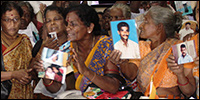 Around 800 Tamil youth were forcefully disappeared in Jaffna peninsula by the occupying Sri Lankan military under Chandrika Kumaratunga's rule between 1996 and 1998 when Tamils returned to Jaffna peninsula, which was seized by the SL military in 1995 through Operation Riviressa. The family members, who have been struggling to know the whereabouts of their kith and kin for years and were looking for answers through international investigations, have revived their protest in front of Jaffna District Secretariat on Wednesday after learning that the United Nations, under the influence of Washington and New Delhi, is now trying to promote domestic investigation mechanism of Colombo by diluting the OHCHR Investigation on Sri Lanka (OISL) process from evolving into international investigations. Full story >> [TamilNet, Monday, 26 January 2015, 23:41 GMT]The mothers of forcibly disappeared persons in Mannaar staged a silent protest on Monday demanding immediate attention from the Tamil National Alliance, the new Sri Lankan regime and the international community to establish the truth on the whereabouts of the persons who were made forcibly-disappeared by the occupying Sri Lankan military; to release the Tamil political prisoners from Sri Lankan jails; to continue the excavation of mass grave of Mannaar killing field and to continue the international investigations on Sri Lanka. The protesting mothers, who were talking to journalists said they were yet to see any constructive step from the new regime or the TNA. They also questioned why the new regime is asking for a ‘list’ of missing persons from the TNA instead of checking their own lists and coming with answers, the protesting mothers asked. Full story >> [TamilNet, Thursday, 17 July 2014, 16:25 GMT]The ‘Terrorist’ Investigation Division operated under the direct control of the Sri Lankan Defence Ministry has again harassed Tamil journalist S.R. Lambart from Mannaar, media sources in North said. The interrogators of genocidal SL military have been harassing the journalist to disclose his email password for the second time while claiming they had tapped a news story as originated from his email address. Full story >> [TamilNet, Sunday, 13 July 2014, 23:05 GMT]“No one is interested in getting compensation before establishing the truth of what had happened to his or her kith and kin reported missing. What the Sri Lankan regime attempts is to reduce the international impact of the reported complains through the SL presidential commission,” said Rev. Fr. E. Sebamalai blaming the commission for only wasting time and not acting upon the reports of over 3,000 complaints that had been already handed over to it. “This commission is also an eyewash move, as in the past, to buy time and escape from any international legal action,” he further said. Full story >> [TamilNet, Tuesday, 03 June 2014, 23:28 GMT]“Sri Lanka: The Island of mass graves,” says editorial of Asian Human Rights Commission’s journal for Feb–April 2014. The editorial by Nilantha Ilangamuwa traces the ‘mass grave’ statecraft of ‘Sri Lanka’ since early 1970s. Generalisation of the mass graves and equating them with labels such as JVP and LTTE, is fundamentally misleading, and would not resolve the issue of State in the island, as the former was state terrorism’s response to a political question and the latter was naked genocide to respond to a national question, to which even the JVP was a party. The Tamil graves are largely not LTTE graves, but graves of ordinary members of a nation. If there is anything common that all in the island have to denounce, that is the very ‘Sri Lanka’ state identity, commented Tamil activists for alternative politics.
Full story >> [TamilNet, Sunday, 04 May 2014, 13:42 GMT]![Prof Jayadeva Uyangoda [Library Photo]](/img/publish/2006/08/prof_uyangoda_int.jpg) In a pioneering and incisive article published 35 years ago in a Colombo-based monthly journal Lanka Guardian, Jayadeva Uyangoda, currently a professor at the Department of Political Science and Public Policy at the University of Colombo, articulated the Tamil Nationhood and corroborated Tamils right to self-determination based on the Marxists-Leninist principle. His article, condemning the Sinhala Left’s failure to grasp the National question in the island is remarkably applicable in the present context of protracted genocide and military occupation, and displays the resilience of Sinhala chauvinism, which is endemic to the Sri Lankan left, opines a Tamil diaspora student of Anthropology, reproducing the article authored by Professor Jayadeva Uyangoda in the Lanka Guardian of 15 March 1979. Full story >> [TamilNet, Sunday, 27 April 2014, 23:11 GMT]Hitherto unseen Sinhala militarisation is taking place in the Jaffna peninsula in recent days, especially after the UN Human Rights Council (UNHRC) passed a watered-down resolution leaving out the de-militarisation demand that had been proposed in the initial draft. The SL military has deployed heavy machinery in clearing 16 acres of lands 400 meters away from Kaithadi junction on Kaithadi – Maanippaay Road appropriating private lands of Tamils surrounding a former camp, transforming the place into a military cantonment. Similarly, Tamil Heroes Cemeteries that were desecrated and bulldozed have been transformed into key command and supply bases of the occupying Sinhala military in the country of Eezham Tamils. The SL military is also constructing new camps at Vallai and Valveddiththu’rai. Full story >> [TamilNet, Monday, 21 April 2014, 23:21 GMT]The occupying Sri Lankan military relocating its 522 Brigade Headquarters, which was the artillery and command base at the Northern front during the war, has been removing the skeletons including the sand from an alleged mass grave site at the locality of the old base in recent weeks, reliable sources in Thenmaraadchi told TamilNet on Monday. After removing all the traces, the bunkers have been filled with sand brought from elsewhere. Despite the claim that it had moved the camp to a new locality, at Aasaippi’l’lai-yeattam at Mirusuvil, the SL military was present at the old site for several weeks to ensure that all traces have been removed, the sources further said. Full story >> [TamilNet, Sunday, 23 March 2014, 06:47 GMT]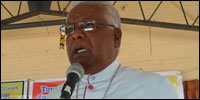 The rulers of the Sri Lankan State are not prepared to come to light; they continue with their activities in darkness. They are capable of telling bigger lies than Satan’s biggest lies, said Rt. Rev. Dr. Rayappu Joseph, the Catholic Bishop of Mannaar, taking part at a peaceful rally in Mannaar on Friday. Even the investigations that are about to commence with international monitoring, as it is being proposed now, are not adequate, he said. “We don’t need it. The Sri Lankan State is capable of guiding even that process under the darkness. The Sri Lankan government is capable in twisting everything through its propaganda orchestration. We also know what happened to the doctors who came from the war zone. As far we as we are concerned, there should only be an international investigation that could bring justice,” the Bishop said. Full story >> [TamilNet, Saturday, 08 March 2014, 23:32 GMT]A person of social leadership living at Maanthai in Mannaar for more than 50 years categorically told TamilNet on Saturday that there was never a burial site at the locality near the historic Thirukkeatheesvaram temple as being claimed by the Sri Lankan Archaeological Department. The Colombo government abruptly ended the exhumation of human skeletons from a mass grave where more than 80 human skeletons have been recovered since December 20, 2013. The latest move by Colombo to dismiss the claim of mass grave comes as the issue gained the attention of UN Hight Commissioner for Human Rights Ms Navi Pillay in her recommendations urged the SL government to undertake an independent and credible criminal and forensic investigations with international assistance into all alleged violations of human rights and humanitarian law, including recently discovered mass graves. Full story >> [TamilNet, Friday, 10 January 2014, 23:08 GMT]Tamil National Peoples Front (TNPF) on Friday urged the global community not to limit the demand for investigations to only war crimes committed in the last phase of the war. Referring to the ongoing exhumation of Thirukkeatheesvaram mass grave in Mannaar, where four of the recovered 32 skulls so far were of children, the TNPF said the slaying of children clearly indicated the nature of genocidal intent. Given the long record of massacres, pogroms, war crimes and the ongoing crimes of structural genocide, the call for investigation should be on the genocide since British left the island, the TNPF said. Full story >> [TamilNet, Wednesday, 01 January 2014, 11:00 GMT]Human skeletons have been spotted inside a well and the surrounding land of a house located at 2nd division of Puthuk-kudiyiruppu (PTK) in Mullaiththeevu district, news reports from Mullaiththeevu said. On the latest reports of finding human skeletons in PTK, Tamil activists in Mullaiththeevu suspected that these could be the victims who were executed by the advancing Sri Lankan military in 2009 genocidal onslaught on Vanni. Full story >> [TamilNet, Monday, 30 December 2013, 08:42 GMT]Occupying Colombo's police officials in Mannaar have said that the skeletons recovered at the mass grave at Thirukkeatheesvaram were being dispatched to China for forensic examinations. Responding, legal sources in Mannaar asked the motive of Colombo using China for DNA testing of the skeletons discovered at the mass grave and questioned the fate of similar cases earlier sent to China for ‘forensic examinations’. In 2009, China had allegedly provided Colombo with ‘movable crematory vehicles’ to get rid of the dead bodies of the genocidal victims in Vanni. Tamil activists urged the alternative world to assist the nation of Eezham Tamils to undertake forensic examinations in future in a credible and independent manner. Full story >> [TamilNet, Sunday, 22 December 2013, 18:08 GMT]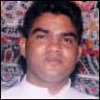 While in the western liberal democracies advanced DNA-based evidence collection has been the staple of modern crime investigations since the advent of DNA testing in 1985, in Sri Lanka DNA testing on Tamil victims have been systematically blocked by Colombo likely as part of the politically sanctioned strategy and forced on the subservient judicial branch to suppress evidence of Sinhala military criminality. While the blocking of Maanthai skeletal findings is the latest in Colombo's involvement in suppressing possible military complicity, the results of the DNA testing of the body of the popular Catholic priest Rev. Fr. Jim Brown, whose mutilated torso was found at Pungkudutheevu sea on 14 March 2007, was also suppressed by Colombo. Colombo media, under direct and indirect threat from Rajapaksas, self-censored the coverage of the Brown story in 2007. Full story >> [TamilNet, Sunday, 22 December 2013, 17:29 GMT]A new site of a mass grave was located this week in Mannaar, 75 meters from Maanthai junction towards Thirukkeatheesvaram, in an area that has been under the control of the occupying Sri Lanka Army since 1990 to the end of Vanni war. Such discoveries, which get highlighted as news stories, do not get proper investigative follow-up by the media, complain legal activists in Jaffna. Observing the pattern of systematic sabotage by the Colombo-centric Sri Lankan justice system on similar discoveries of mass graves in North in the past, Tamil lawyers say all requests for forensic examinations forwarded to Colombo by the SL courts in North and East get blocked in Colombo. Full story >> [TamilNet, Saturday, 23 November 2013, 13:53 GMT] The operatives of the occupying Sri Lankan military on Friday arrested VIS Jayapalan, a well-known Eezham Tamil poet and an award-winning actor in Indian Tamil cinema, while the Norwegian passport holder was visiting the island on a tourist visa. The arrest took place in abduction-style. By arresting Jayapalan, Colombo was sending a message to Eezham Tamil diaspora that Tamils visiting the island should not address any meeting or gathering. Colombo's TID operatives could claim any meeting as a ‘gathering causing communal unrest,’ academic circles in Jaffna said. In the meantime, the SL Police in Ki'linochchi, on Friday told 40 people it detained that all gatherings and meetings have been banned until further notice in the district. Full story >> [TamilNet, Monday, 01 October 2012, 22:21 GMT]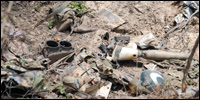 An official who recently visited the outskirts of Mu'l'livaaykkaal with the soldiers of the Sri Lanka Army told TamilNet this week that he had personally witnessed skeletal remains of hundreds of slain people surfacing along the few kilometers long, L-shaped bunker, running from Vadduvaakal to northwards along the land of the genocidal onslaught. A vast area is still not cleared and is strictly prohibited from access to anyone except SL military officials. “There are booby traps and UXOs. Rotten automatic rifles and RPG ammunitions are lying around in the area. When I walked across a bunker, I was able to sense that it was a bunker of mass slaughter. As the bodies buried underneath have rotten, the soil was going under as we walked across,” he said. Meanwhile, some other mass graves show the use of chemicals that have burnt even the bones to become ashes, journalists report. Full story >> [TamilNet, Monday, 20 August 2012, 21:55 GMT]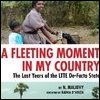 As a first hand written account of a diaspora Tamil who lived and worked for over four years in civilian institutions in the de facto state of the Eezham Tamils, N. Malathy’s “A fleeting moment in my country: The last years of the LTTE de-facto state” bears witness to how the sovereignty earned through the conduct of the struggle of the Eezham Tamils was denied by world powers, leading to the Mu’l’livaaykkaal massacre. A literature of ‘lived experience’ of one who stayed in Vanni for 4 years working with civilian institutions like NESoHR, women and child organizations, and later spending over 4 gruelling months in the Manik farm detention camps, the book should elicit interest not just from Tamils world over, but also academics, activists, feminists, journalists and those interested in studying social life under a political struggle against genocide. Full story >>
|
|








![Prof Jayadeva Uyangoda [Library Photo]](/img/publish/2006/08/prof_uyangoda_int.jpg)




